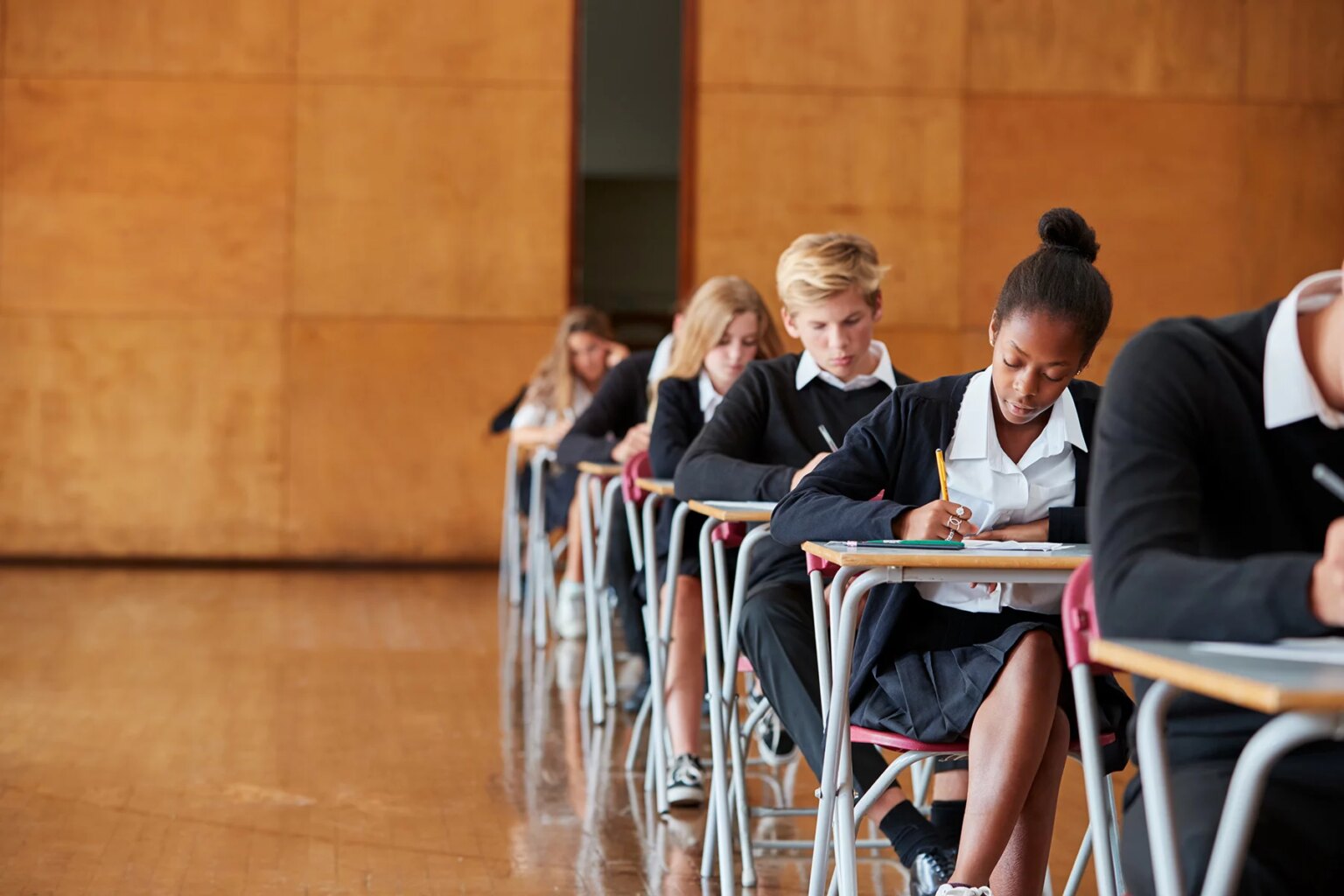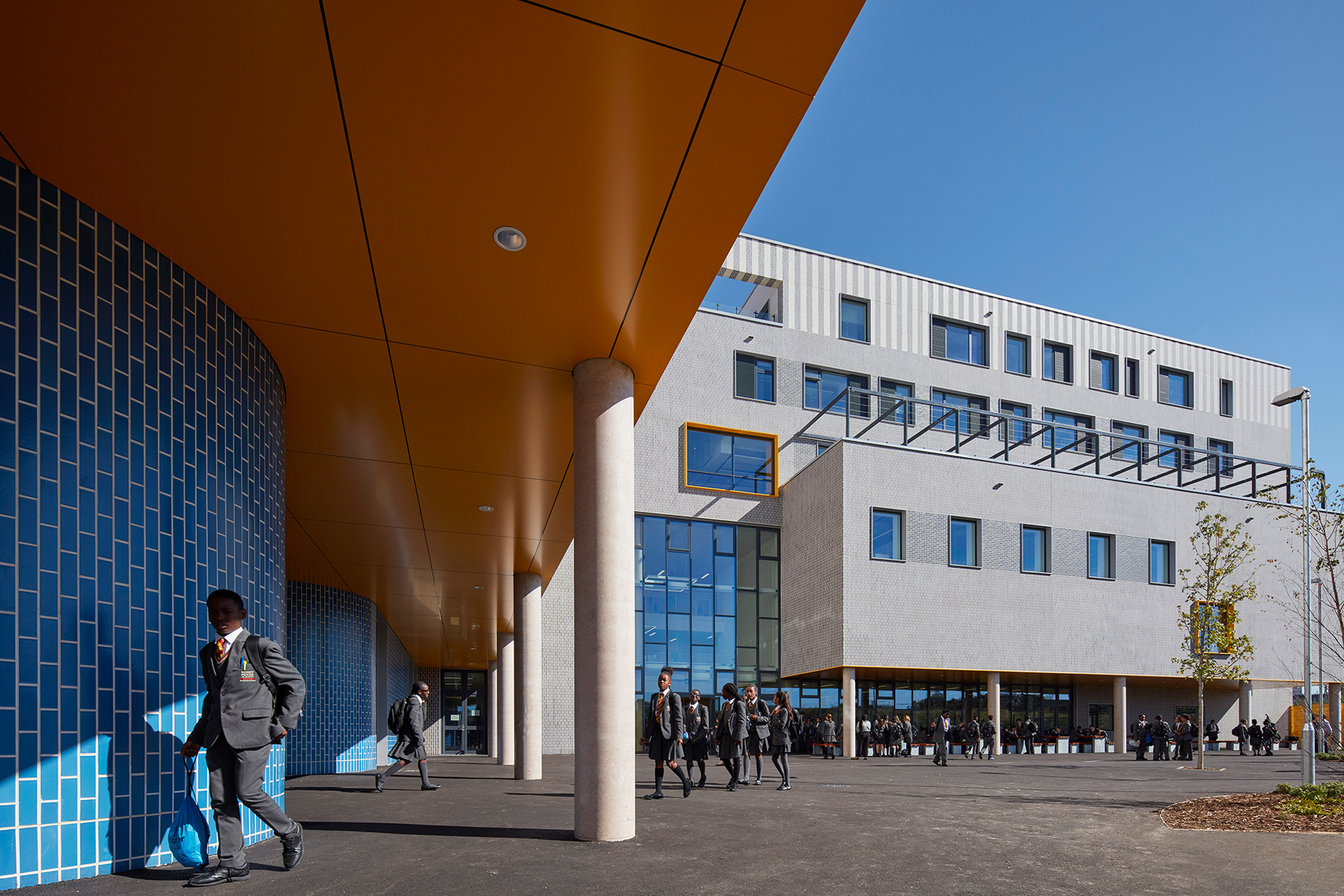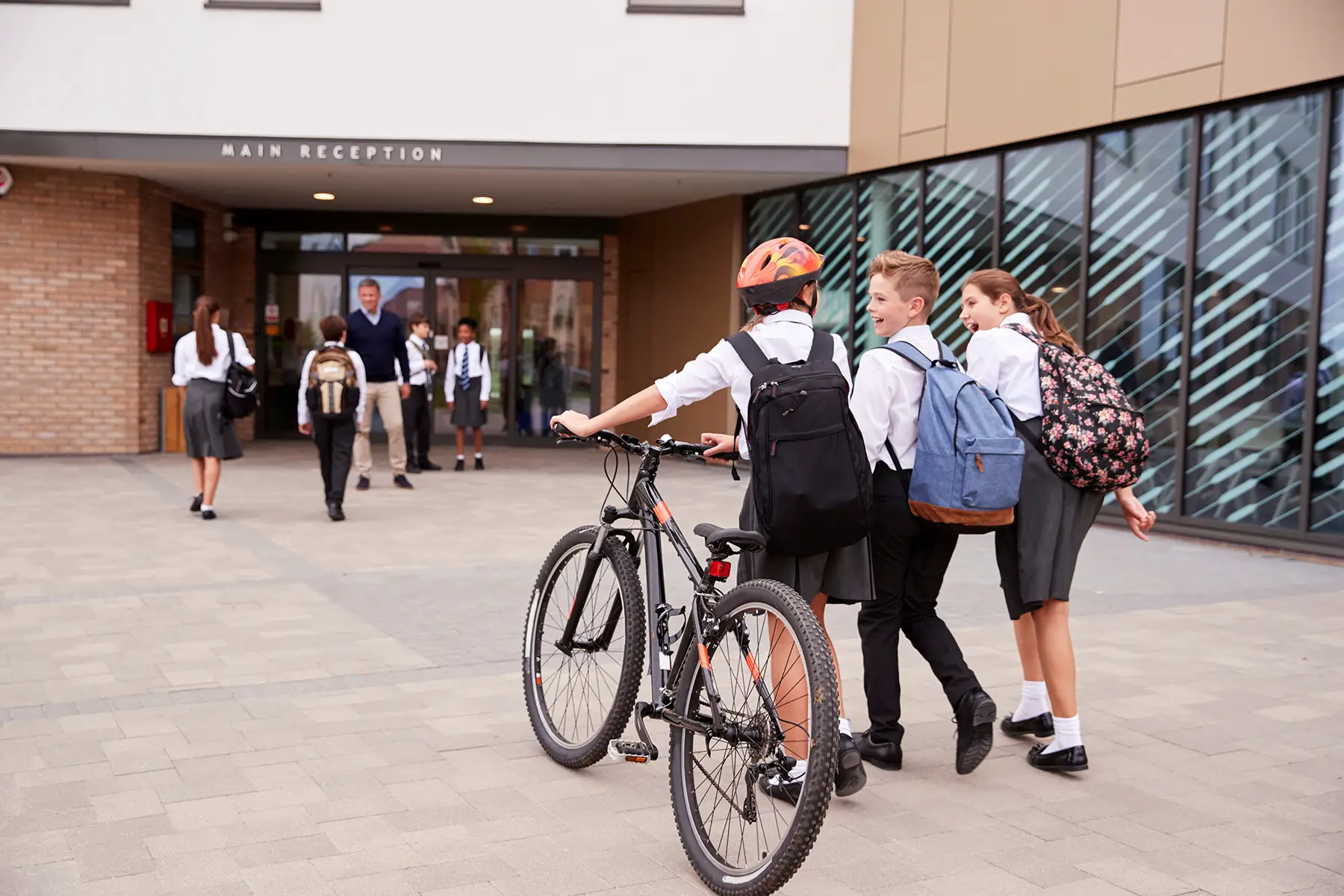The United Kingdom is formed of four constituent countries: England, Northern Ireland, Scotland, and Wales. In practice, this means some aspects of everyday life differ depending on which of these countries you live in. This includes the education system, which is governed by each of the devolved nations.
Despite some similarities between these systems, a report by the Education Policy Institute (2021) found that the approaches to education differ significantly after years of decentralization. Understandably, a new arrival to the UK may find the whole system confusing. But don’t worry. This article will help clarify things, looking at:
- Education in the UK
- State education in the UK
- Education in England
- Welsh education system
- Education in Scotland
- Education in Northern Ireland
- Private education in the UK
- Graduating in the UK
- Financial aid and scholarships in the UK education system
- Educational support for expat students in the UK
- Changing schools in the UK
- Chances for parental involvement in schooling in the UK
- Homeschooling in the UK
- Useful resources
TASIS
TASIS England is an American international school in the UK. The school follows an American curriculum for students from Pre-K to 12th grade, including the IB Diploma for older students. For a rigorous education for your children in the beautiful Surrey countryside, consider TASIS England.
Education in the UK
Any child residing in the UK may attend their local state school as long as they have the right of abode. In other words, they have the right to live in the country. The UK education system covers preschool, primary, and secondary schools. It also includes higher education. The UK has a strong state-funded school system that provides free education for all. Still, parents typically pay for stationery, uniforms, PE kits, meals, school trips, and extracurricular activities.
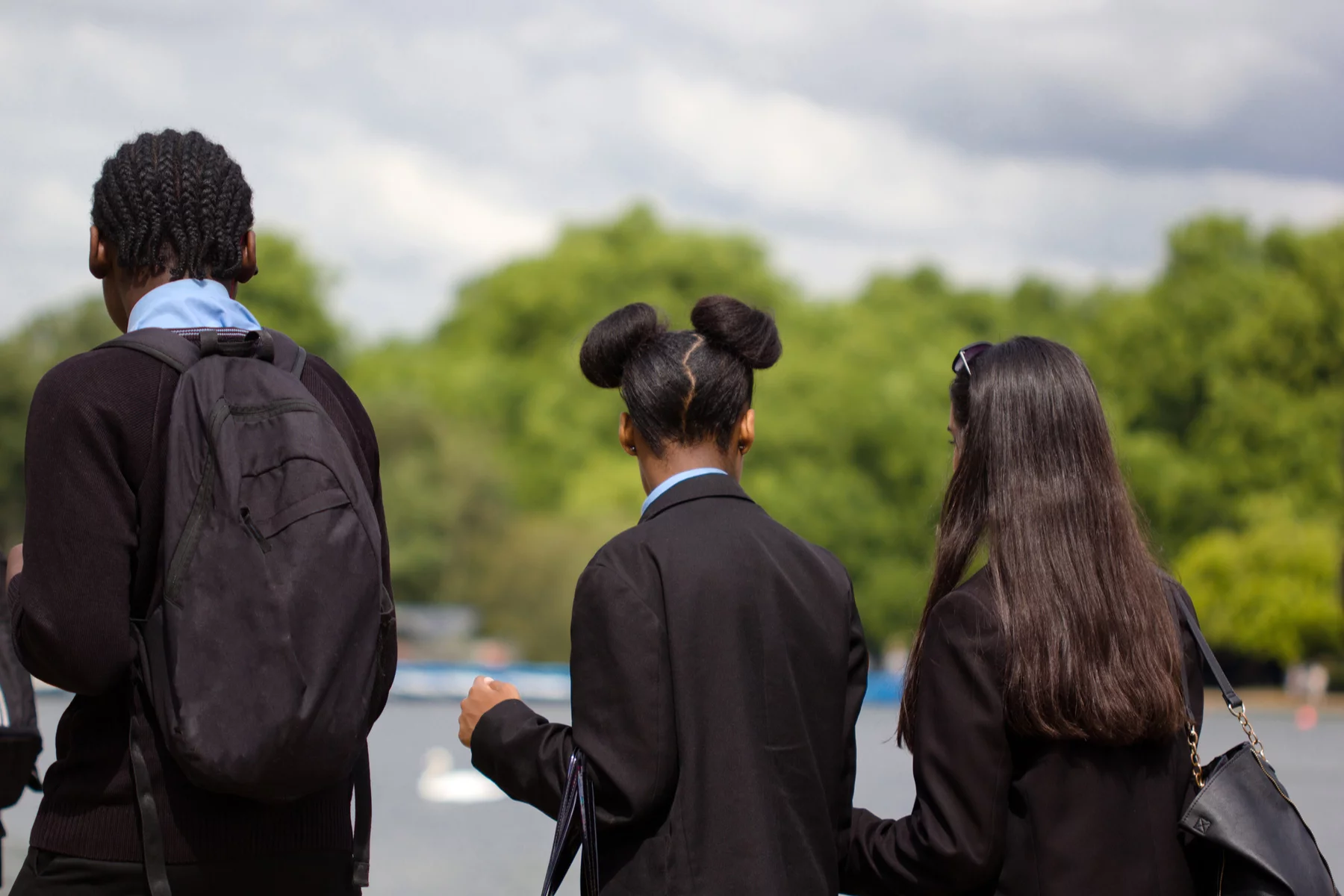
There are also many independent schools across the UK. These include private (public schools), international, and boarding schools. For example, Eton, Harrow, and Winchester are some of the UK’s best-known public schools. The government does not fund, nor partially subsidize these private schools. Parents therefore must pay tuition (and boarding, if applicable) fees, which can be expensive.
School uniforms in the UK
Schools in the UK love uniforms. Children typically wear these in both state and independent schools with the possible exception of Montessori, Steiner Waldorf, and some international schools.
School timetables in the UK
The school week runs from Monday to Friday. Typically, a school day starts at 08:30 or 09:00 and ends at 15:30 or 16:00. Students typically have morning and lunch breaks. Primary schools may also have afternoon breaks. Some schools have a shorter day on Fridays.
The school year in the UK runs from August or September to June or July, depending on the region. Normally, school holidays include half-term, Easter, Christmas, and summer breaks. Schools also close on bank (public) holidays.
State education in the UK
The publically-financed education system in the UK is typically called state education. Incidentally, the term “public schools” is largely used in reference to private schools in the UK. This can be confusing for new arrivals to the UK, so be aware of which type of school you talking about.
Generally, the quality of the UK education system is good. For instance, the UK performed above the OECD average on the 2018 PISA tests for reading, mathematics, and science. PISA is the Programme for International Student Assessment for 15-year-olds.
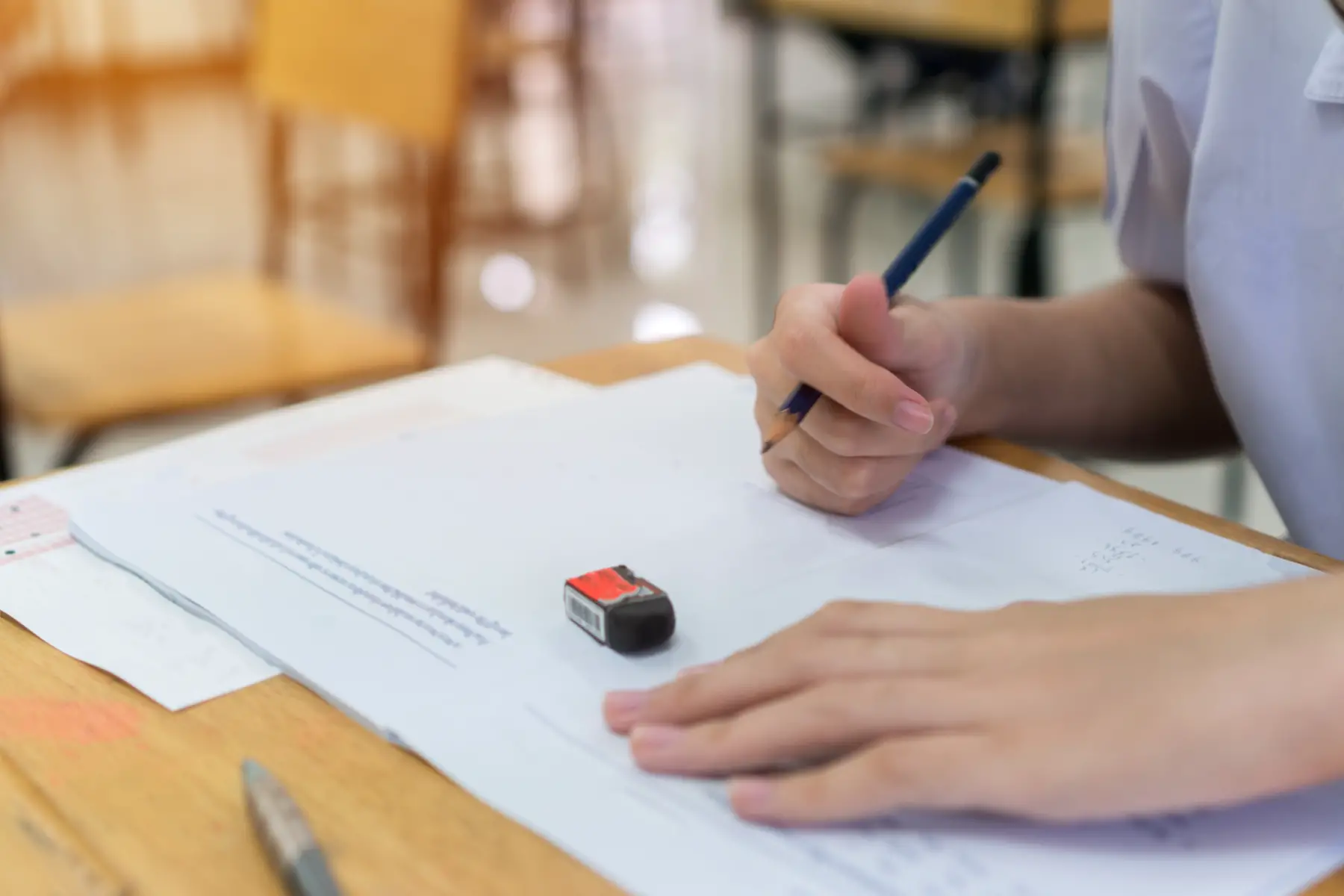
According to the 2021 national statistics, 10.5 million students attended state schools across the UK.
At the end of their compulsory education, secondary school students write exams in nine subjects to attain the General Certificate of Secondary Education (GCSE). This is in Year 11 in England and Wales and Year 12 in Northern Ireland. Maths, English, and science are core subjects, which every student must take. The equivalent in Scotland is the National 5 exams. In 2021, 51.9% of pupils across the UK achieved a grade 5 (strong pass) or above in their GCSE exam for mathematics.
Education in the UK beyond these years is called further education and typically runs until the student is 18 years old. At the end of this, they typically complete the Advanced (A-Level) exams at the end of Year 13 (England and Wales) or Year 14 (Northern Ireland) to graduate. In Scotland, it is the Highers and Advanced Highers. Average A-Level results increased from C+ to B in 2021. However, one must account for the impact COVID-19 had on schooling and assessments.
School inspection and reports
As a parent, you’ll probably want to know how good your child’s prospective school is. One way to find out is to access the public inspection reports. Each nation has its own educational review body, which publishes these reports. Listed below, are the ones for England, Wales, Scotland, and Northern Ireland.
- England – Office for Standards in Education, Children’s Services, and Skills (Ofsted)
- Wales – Estyn
- Scotland – Education Scotland
- Northern Ireland – The Education and Training Inspectorate (ETI)
School structure in the UK
Across the UK, attending preschool or nursery is voluntary. Still, children above three can access some free childcare hours per week. Read on how each region funds these hours.
Primary schools
Usually, the primary stage in the UK education system starts from four or five and covers about seven years of schooling. After primary school, students attend secondary school. Even though compulsory education includes about 12 years until the age of 16, most students complete two more years to apply to universities.
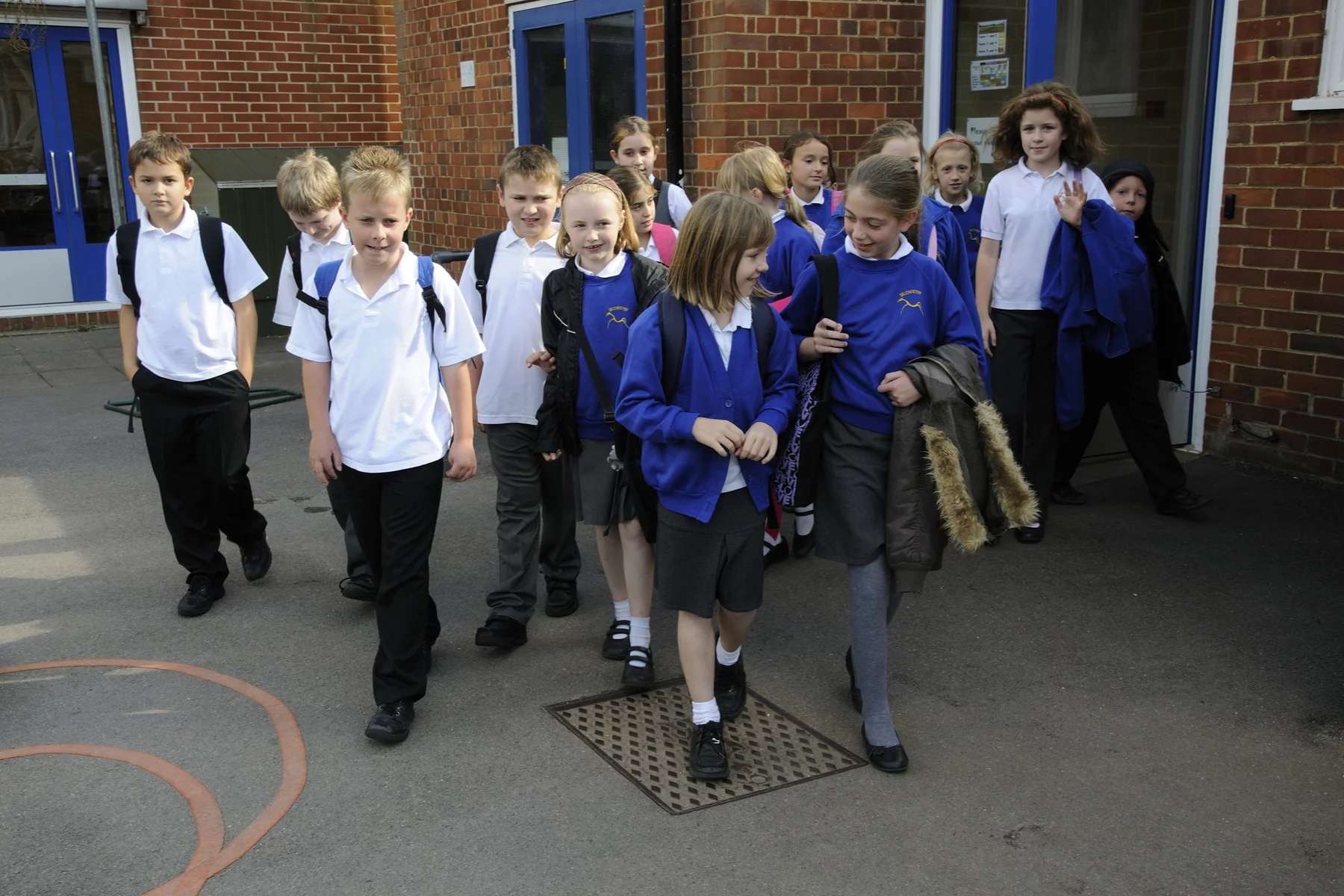
The devolved education system makes it tricky to figure out the school years. To simplify this, the table below compares primary schools across the UK. Be aware that in Scotland, children attend primary school a year longer than the rest of the UK. The table also notes the different standardized assessments and exams.
| Age | England | Wales | Scotland | Northern Ireland |
|---|---|---|---|---|
| 4 – 5 | Reception Baseline assessment | Reception | Nursery | Year 1 |
| 5 – 6 | Year 1 Phonics screening | Year 1 | P1 SNSA | Year 2 |
| 6 – 7 | Year 2 SATs | Year 2 | P2 | Year 3 |
| 7 – 8 | Year 3 | Year 3 | P3 | Year 4 InCAS |
| 8 – 9 | Year 4 | Year 4 | P4 SNSA | Year 5 InCAS |
| 9 – 10 | Year 5 | Year 5 | P5 | Year 6 InCAS |
| 10 – 11 | Year 6 SAT2 | Year 6 | P6 | Year 7 InCAS |
| 11 – 12 | Secondary | Secondary | P7 SNSA | Secondary |
Secondary schools
Scotland’s school years do not exactly match the rest of the UK education system as children enter secondary schools between 12 and 13. So, roughly, it is equivalent to Year 8 in England. Therefore, it is easier to look at when students write important exams and attain specific qualifications. Again, the table below compares the four regions.
| Age | England | Wales | Scotland | Northern Ireland |
| 11 – 12 | Year 7 | Year 7 | Primary | Year 8 |
| 12 – 13 | Year 8 | Year 8 | S1 | Year 9 |
| 13 – 14 | Year 9 | Year 9 | S2 | Year 10 |
| 14 – 15 | Year 10 | Year 10 | S3 SNSA | Year 11 |
| 15 – 16 | Year 11 GCSE | Year 11 GCSE | S4 National 5 | Year 12 GCSE |
| 16 – 17 | Year 12 AS-Level | Year 12 AS-Level | S5 Highers | Year 13 AS-Level |
| 17 – 18 | Year 1 A-Level | Year 13 A-Level | S6 Advanced Highers | Year 14 A-Level |
Assessment acronyms
The assessment acronyms stand for the following:
- SATs – End of Key Stage Tests and Assessments
- SNSA – Scottish National Standardised Assessments
- InCAS – Interactive Computerised Assessment System
- GCSE – General Certificate of Secondary education
- AS-Level – Advanced Subsidiary
- A-Level – Advanced
Recent education reforms in the UK
There have been two recent reforms to the UK education system. First, in 2014 England changed its GCSE grading system from the A to G system to a 1 to 9 numerical scale, 9 being the highest. Second, Wales introduced a new curriculum in 2022. Learn more about the curriculum under the Welsh section.
Education in England
The Department for Education (DfE) regulates pre-primary to post-secondary learning in England. Seventeen agencies and public bodies support the DfE. Most state schools are maintained, which means the local authority (LA) funds and manages these. There are also several state boarding schools that only charge for boarding, not tuition.
Many state-funded schools, called faith schools, have a Christian religious character. For example, out of the 378 denominational schools in Scotland, only 11 are independent. Still, you can search for independent faith schools with the Catholic Independent Schools Conference’s (CISC) search tool or New Christian Schools. However, Jewish and Islamic schools tend to be independent.
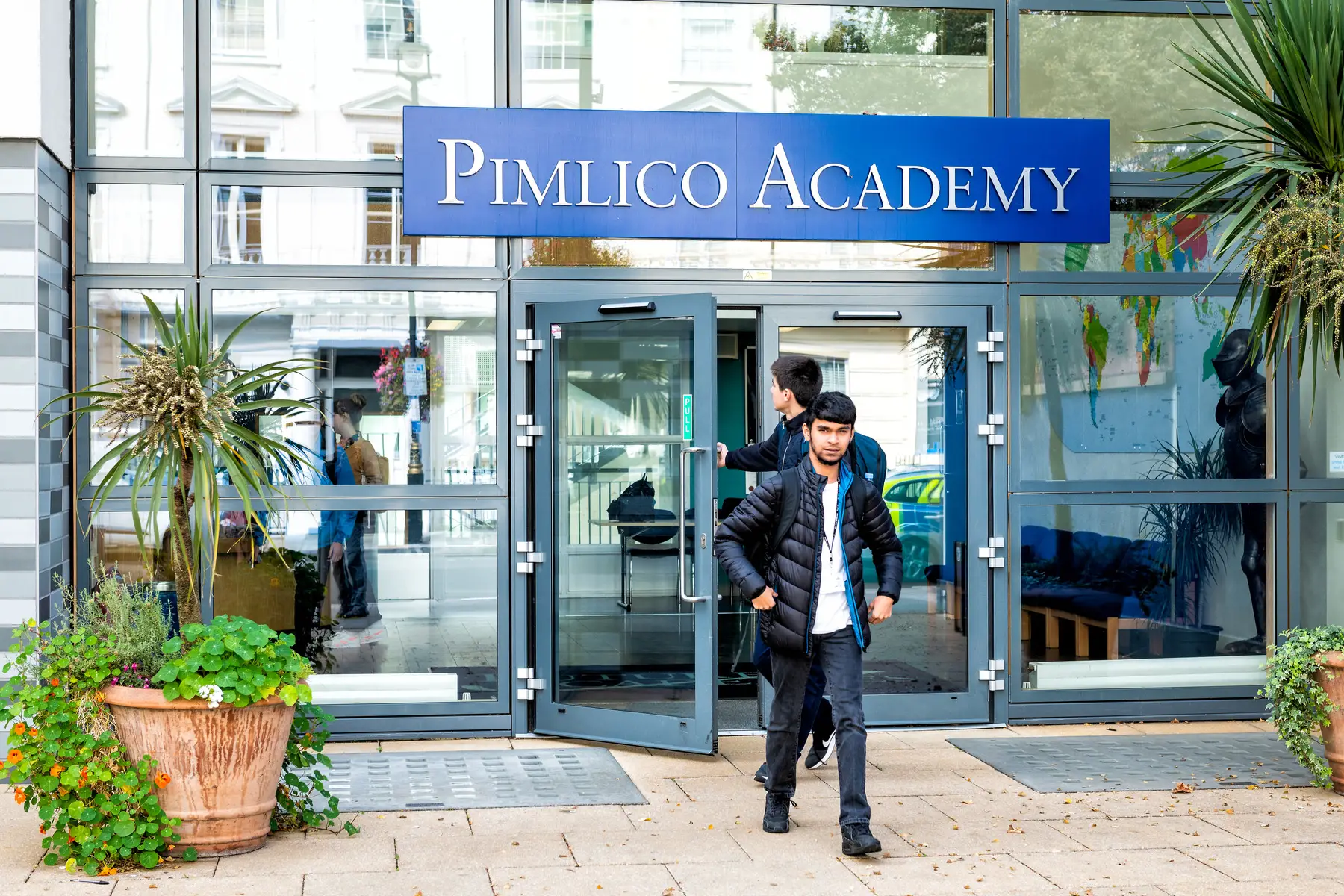
Confusingly, state schools can also be non-maintained, like free schools and academies. While maintained schools must follow the national curriculum, non-maintained schools do not. Both types of state schools are free to attend. You can compare specific schools in England on the DfE website.
Parents cannot choose a state school. Instead, they have to apply through their local council. Still, they can list preferred schools in the catchment area near their home. The council then places children based on specific admission criteria.
Preschool education in England
From birth to five falls under the Early Years Foundation Stage (EYFS), which includes preschool education. There are many childcare options available for children up to three years: childminders, daycares, crèches, and au pairs. However, as the government does not subsidize childcare before three, it is expensive. Fortunately, parents can access financial support.
Once a child turns three, they receive 30 hours of free childcare. Toddlers can go to public or private preschools or the nursery attached to their local primary school. Preschools use play-based education to develop a child’s early skills, across the following learning areas:
- Communication and language
- Personal, social, emotional, and physical development
- Literacy and mathematics
- Understanding the world
- Expressive arts and design
Primary school education in England
State schools in England follow the National Curriculum, which divides into Key Stages 1 and 2 from Reception to Year 6. Learning areas are broad and include literacy, numeracy, arts, technology, and humanities.
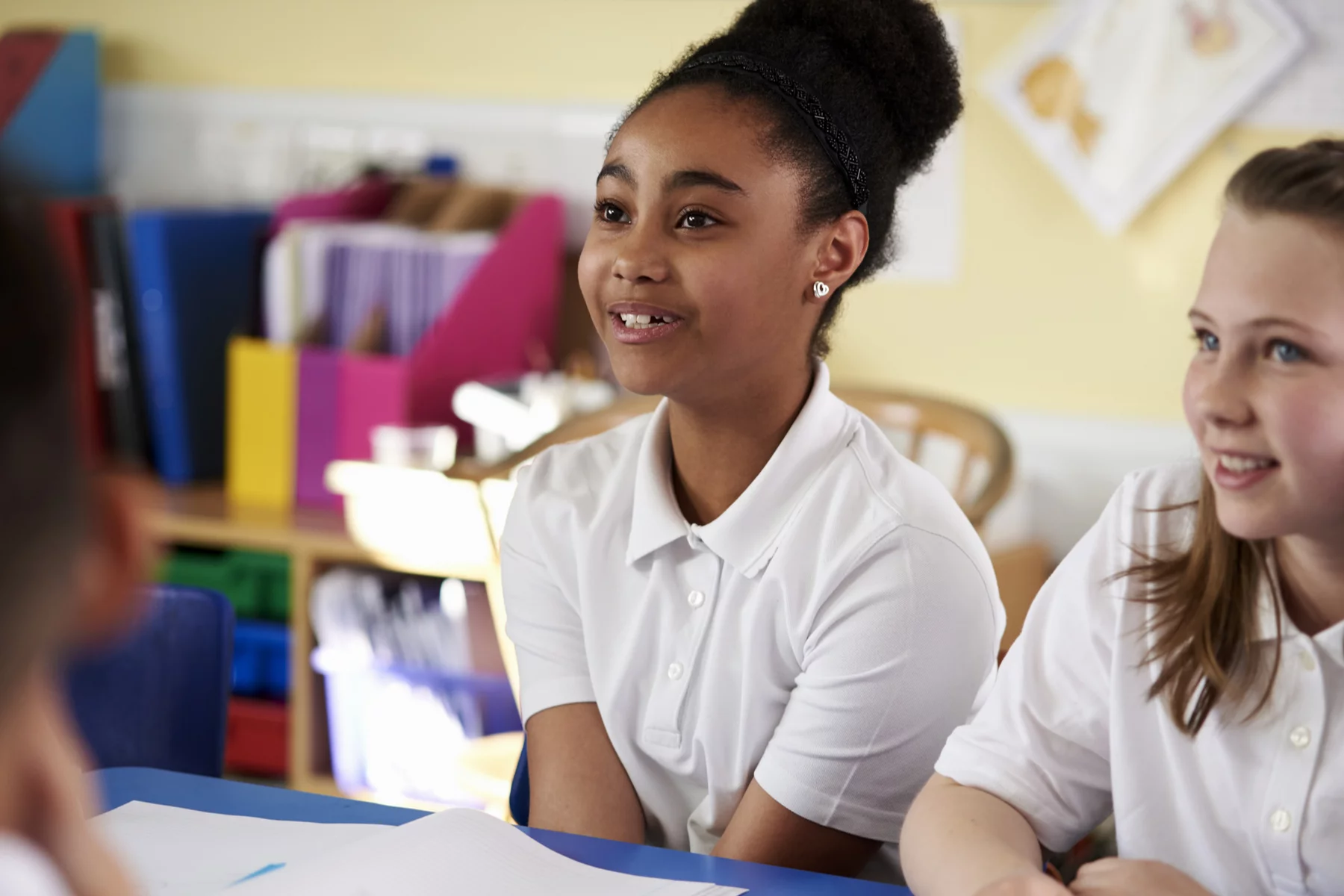
Parents need to be aware of four key assessments. First, when pupils start Reception, teachers do a baseline assessment. After that, at the end of Year 1, they will take a phonics screening test. Children will also sit End of Key Stage Tests and Assessments (SATs) in Years 2 and 6 to measure their learning progress.
Traditionally, schools in the UK provide lunch. In England, these meals are free for students in Reception, Year 1 and 2. From Year 3 onwards, parents must apply for the income-assessed free school meals through their local council otherwise they pay extra.
Secondary school education in England
Typically, children start their secondary education around 11 or 12. Most state secondary schools across the UK are comprehensive, meaning they accept students of all abilities.
Additionally, certain local authority areas in England also have grammar schools. Grammar schools are selective state secondary schools that select their students based on ability. Prospective students must complete entrance exams, known as the Eleven Plus (11-plus). There are 163 grammar schools across the UK.
Except for Scotland, Year 11 students across the UK education system write the General Certificate of Secondary Education (GCSE) exams. The difference between England, Wales, and Northern Ireland is that English GCSEs are graded from 1 to 9 (9 being the highest). Also, qualifications are linear, with exams at the end of the course. For this reason, if students repeat the qualifications, they must re-take all the exams for all subjects. Still, they can re-use their non-exam grades.
Further education in England
After the GCSEs, students sit the Advanced Subsidiary (AS-Level) exam in Year 12 and graduate with the Advanced qualification (A-Level) in Year 13.
Have you heard the terms Sixth Form and college and wondered what they mean? Firstly, not all secondary schools have a Sixth Form. It is largely a hangover from the old education system when the school years were called Forms. For comparison, Year 12 is equivalent to Lower Sixth (L6) and Year 13 to Upper Sixth (U6).
Secondly, there are two types of colleges, Sixth Form colleges and Further Education (FE) colleges. Sixth Form colleges offer A-Level qualifications and are attached to secondary schools. Alternatively, FE colleges are stand-alone institutions where students aged 16 to 19 can study A-Levels or BTECS. This stands for Business and Technology Education Council and is a vocational qualification. There are 381 colleges across the UK: 287 FE and 94 Sixth Form.
Support for children with special educational needs (SEN)
SEN is also called special educational needs and disability (SEND) in England. A parent contacts the SEN coordinator (SENCO) at their child’s school to discuss any accessibility, learning, or behavioral needs. The school is obliged to meet these needs as much as possible.
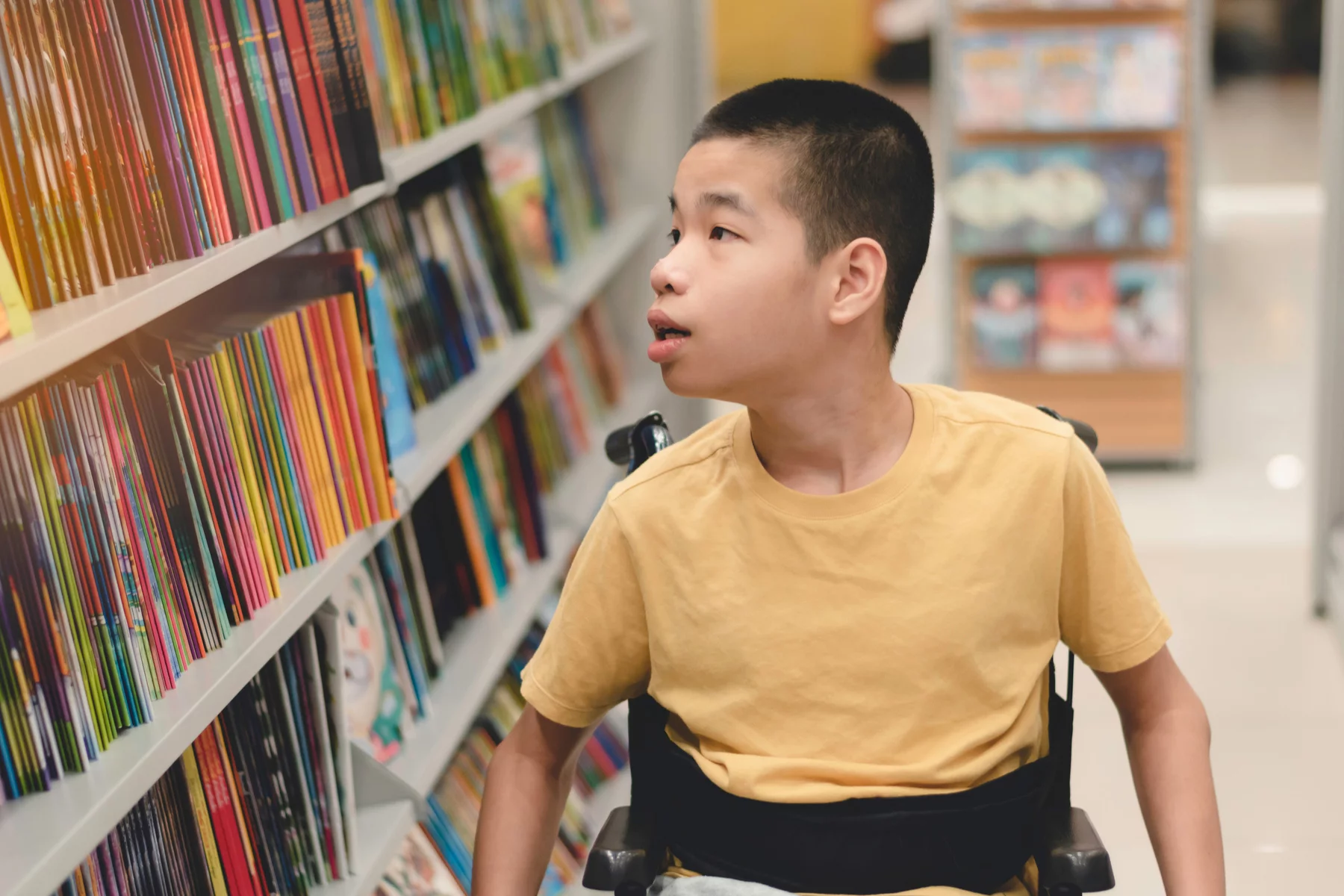
However, if a child needs more support than the school’s SEND service can provide, a caregiver can request an educational, health, and care (EHC) plan, through their local council.
Children under five
For a child under five, SEND support includes:
- A written progress report at age two
- A health visitor assesment between two and three
- A written review in Reception, at around four or five
- School making realistic adjustments to improve accessibilty and support learning
Children 5 to 15
For children, 5 to 15, SEND support may include:
- A special learning program
- Closer observation and extra attention from a teacher or aide
- Working in a smaller group
- Receiving support participating in class and communicate with other children
- Assistance with physical or personal care
Young people (16+)
Before enrolling, students should contact the college to discuss how they will meet any special educational needs (SEN).
Other SEND support services
The Council for Disabled Children works with over 300 organizations to help children with special educational needs (SEN) reach their full potential. It is a good idea to contact the Information, Advice, and Support Services Network (IAS) to access resources for families of children with SEN.
Welsh education system
In Wales, the Department for Education and Skills (DfES) oversees all learning. Its National School Categorisation System rates schools’ performance. For instance, it considers a school’s leadership, quality of teaching and learning, and how much support it needs to improve. However, this system does not replace the Estyn inspection reports. You can search My Local School for more information on specific institutions.
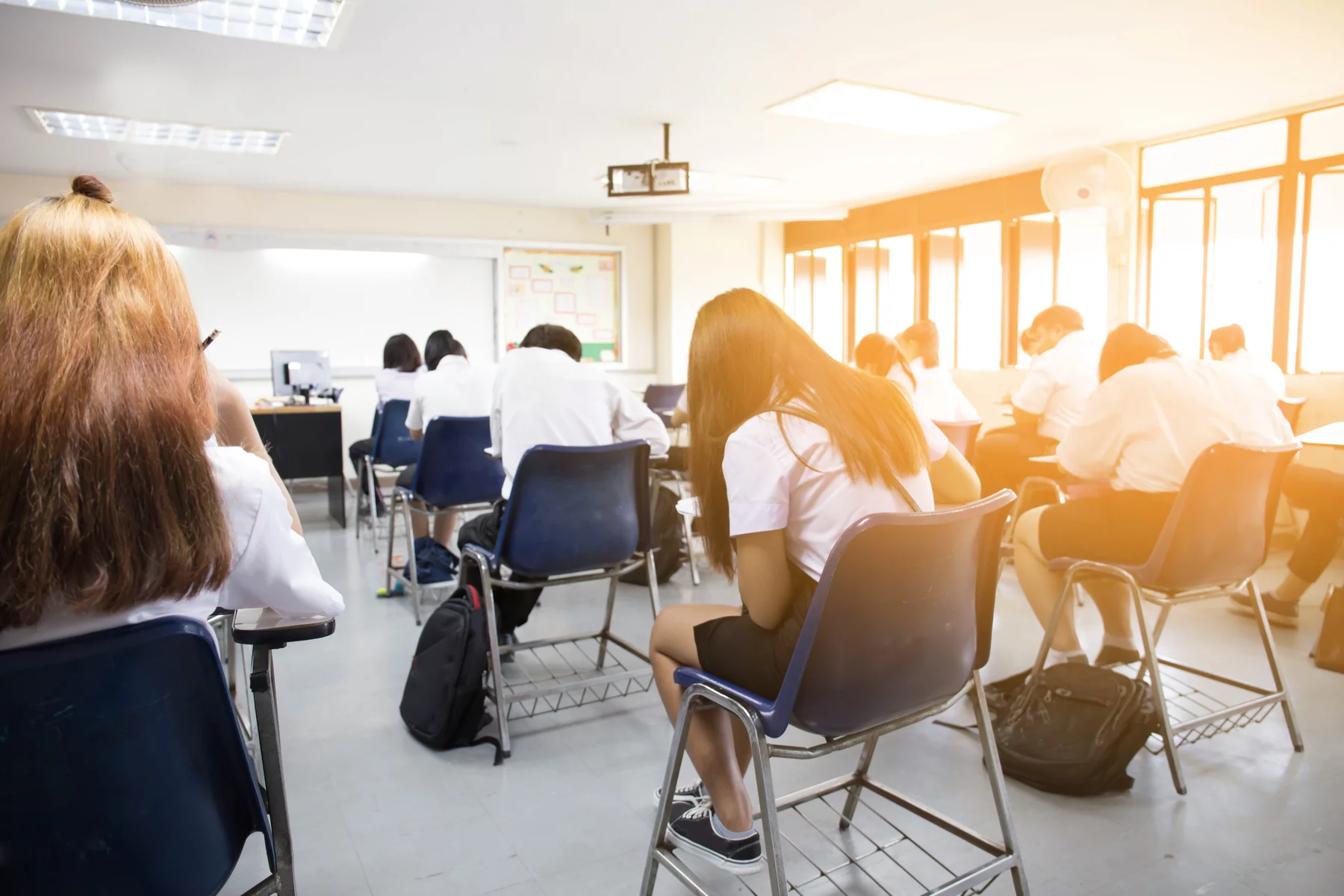
Wales does not have free schools nor academies, only maintained state schools: community mainstream and special schools, voluntary controlled (VC) and aided (VA) schools, and foundation mainstream and special schools.
Most primary schools in Wales teach in English, but as 12% of the population speak Welsh in their homes, it makes sense that there are also Welsh-medium schools. There are 350 Welsh schools and 29 dual-stream (Welsh and English) schools. These are all state schools; no Welsh-medium schools are independent.
The admission process is similar to England. Councils place children based on catchment areas, but parents first need to complete their local council’s application form and list their preferred schools. Note that the council cannot guarantee places at a specific school.
Preschool education in Wales
The Foundation Phase covers preschool education in Wales. Children between three and four receive up to 30 hours of free childcare weekly. These include 10 hours minimum of early education and 20 hours maximum of childcare. Options include nurseries, childminders, playgroups, crèches, and nannies.

Toddlers learn through play across seven areas of development:
- Personal and social skills, well-being, and cultural diversity
- Language, literacy, and communication
- Numeracy
- Welsh language
- Understanding of the world
- Physical abilities
- Creative skills
Primary school education in Wales
Historically, Wales followed the National Literacy and Numeracy Framework (NLF). However, in 2022, Education Wales (Addygsg Cymru) introduced a new curriculum. First, schools will implement it from Years 1 to 7. Eventually, between 2023 and 2026, they will roll out the curriculum in Years 8 to 11. It covers literacy, numeracy, digital skills, arts, humanities, and physical education.
Instead of standardized assessments, teachers observe and review students’ learning progress individually and continually. The aim of assessments in Welsh schools is to support learner progression.
Furthermore, Welsh primary schools provide free school meals to eligible students, based on specific criteria.
Secondary school education in Wales
Once students complete their primary schooling, they apply to a secondary school. This stage covers five compulsory years and two elective years. Similar to England, the two most important assessments are the GCSE at the end of Year 11 and the A-Level at the end of Year 13. The syllabus includes:
- English
- Welsh
- Modern foreign languages
- Mathematics
- Science
- Design and technology
- Information and communication technology (ICT)
- Humanities (history and geography)
- Arts
- Music
Schools further aim to prepare students for the working world by developing their personal, social, communication, and critical thinking skills.
The Welsh GCSEs at the end of Year 11 are graded from A* to G. Only some GCSEs are linear with exams at the end of the year. Others are modular, meaning the course consists of units (modules). As such, students write exams at the end of each module, instead of the end of the year. For linear GCSEs, students must re-take all the exams if they want to repeat the qualification. On the other hand, for modular GCSEs, learners only need to retake a unit but they can only do so once.
Support for children with special educational needs (SEN)
As of September 2021, children with additional learning needs (ALN) receive support within the ALN framework. This replaced the old special educational needs (SEN) system. Students with ALN receive support based on an Individual Development Plan (IDP). The IDP stipulates all the additional support a child needs to learn. Also, it recommends the type of school best suited to their needs. The local authority is legally obliged to ensure these needs are met.
Furthermore, parents can contact SNAP Cymru. It is an independent organization that provides support, advice, and information to parents, families, and young people with disabilities and ALN.
Education in Scotland
In Scotland, the government oversees all learning via its executive agency, Education Scotland. It divides state schools into local schools (mainstream), special schools (SEN), and denominational (faith) schools. Some schools offer Scottish Gaelic as a subject, but it is not compulsory. There are also no Gaelic-medium schools, where the instruction language is Gaelic. In other words, the main language of instruction in all Scottish state schools is English. You can find detailed information on every Scottish school via the Parentzone portal.
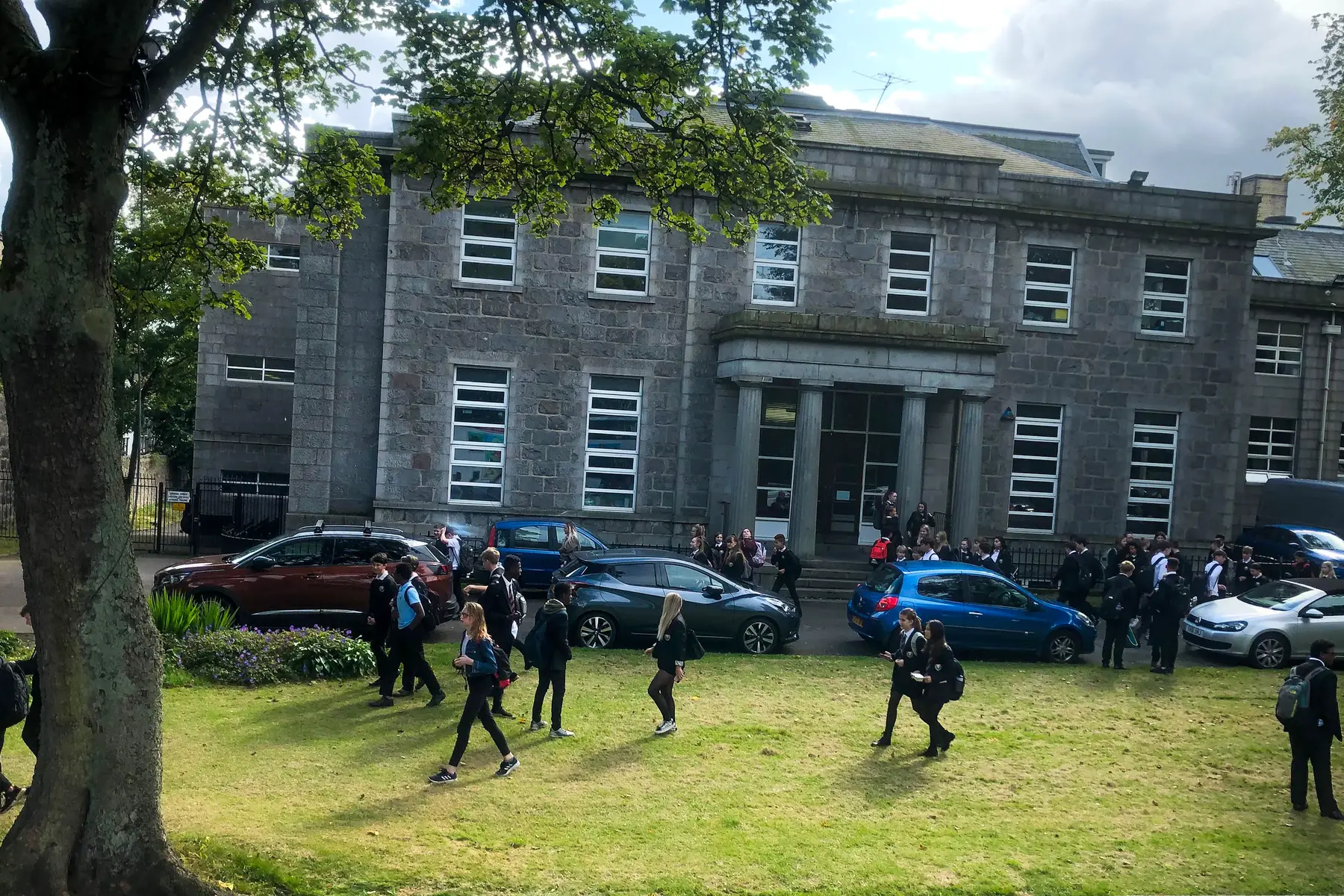
Class sizes in Scotland are smaller than in other regions: 16 pupils per teacher in primary schools and 12 students per class in secondary schools.
A parent cannot choose a state school for their child. Instead, local councils allocate places based on catchment areas. Councils will only grant requests for schools outside a child’s catchment area if the school is not oversubscribed.
Preschool education in Scotland
Early learning and childcare (ELC) refer to all childcare services for children up to school age. Caregivers of children (age 3–5 years) can claim up to 1,140 hours (30 hours per week) of free ELC per year. These services include:
- Family centers
- Day nurseries
- Nursery schools or classes attached to primary schools
- Childminders
The ELC curriculum takes a child-centered approach by developing a toddler’s personal, emotional, cognitive, communication, and physical skills through play.
Primary school education in Scotland
Scotland follows the Curriculum for Excellence (CfE), which divides into two cycles: broad general education and the senior phase. Broad general education covers primary school (P1 – P7) plus the first three years of secondary school (S1 – S3). This phase develops children’s literacy, numeracy, and cognitive skills. It also nurtures life skills to develop a strong sense of self and community. Some schools offer Gaelic education but it is not a compulsory subject. Learning areas cover:
- Expressive arts
- Health and well-being
- Languages
- Mathematics
- Religious and moral studies
- Sciences
- Social studies
- Technologies
Children also take online standardized assessments (SNSA) in P1, 4, 7, and S3 to review their learning progress, specifically in literacy and numeracy.
Moreover, all pupils in P1 to P5 (aged 4 – 9 years) can get free school lunches. After this age, children only receive free meals if their family meets certain criteria.
Secondary school education in Scotland
The senior phase, from S4 (age 15 – 16 years), builds upon and deepens students’ knowledge base. Apart from the programs leading to qualifications, there is an ongoing emphasis on health and well-being, personal achievement, work experience, and community service. Schools partner with colleges, universities, employers, and community learning centers, to offer bespoke study streams, which lead to academic or vocational qualifications.
Scotland’s assessments differ from the rest of the UK. Instead of the GCSE, they write the National 5 exams. Beyond that, the Scottish further education equivalent to the AS-Level and A-Level exams are the Higher and Advanced Higher exams.
Support for children with special educational needs (SEN)
In Scotland, SEN support is called additional support for learning (ASL). Children who need ASL have the right to attend their local mainstream school. However, if the school does not meet the student’s needs adequately, parents can consider a special school. Typically, these schools focus on a specific disability or learning difficulty with expertly-trained teachers and staff. A small number of schools even offer residential, full-time care for learners with high and complex needs.
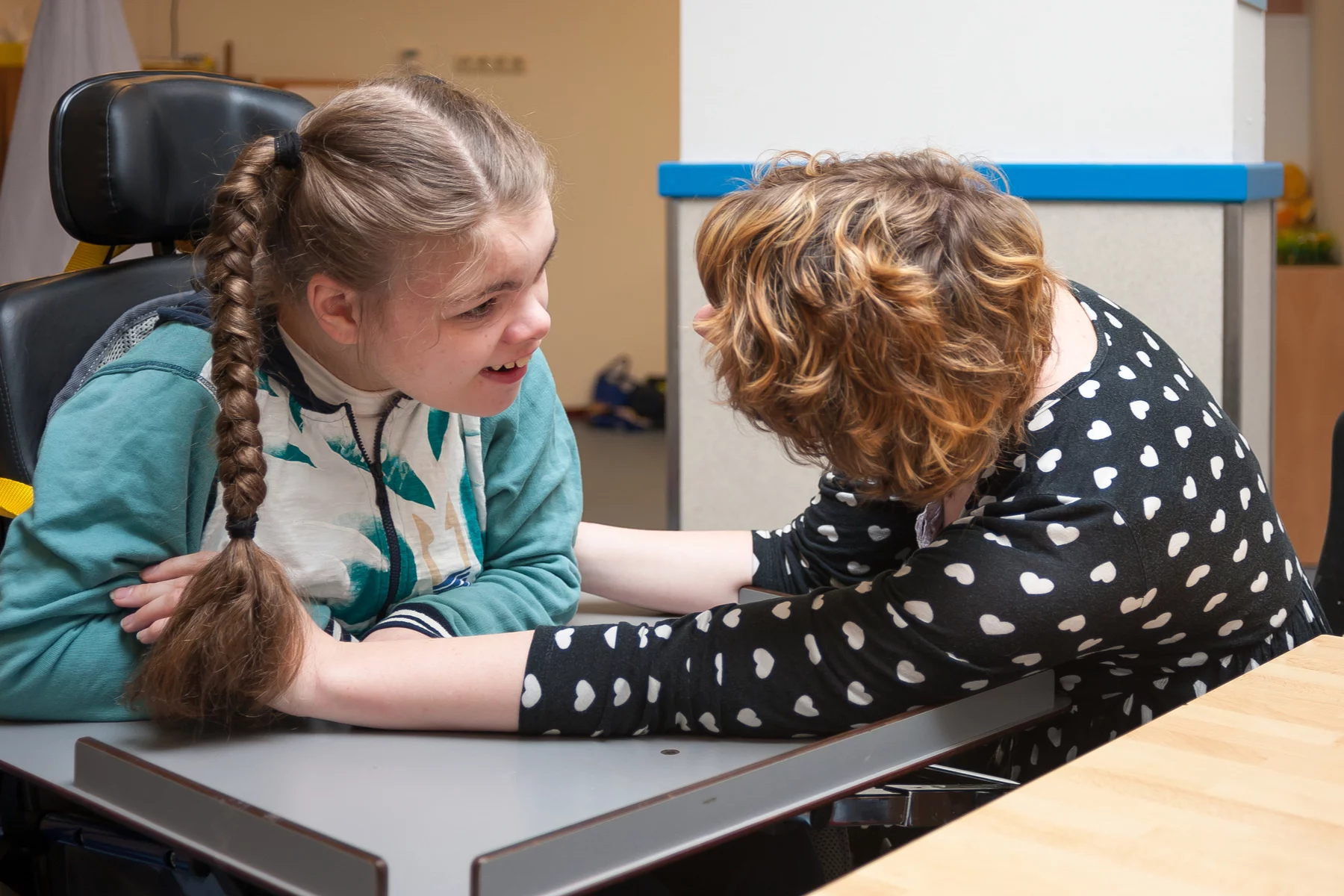
Parents can start by contacting the ASL advice service, Enquire, to find out what their child’s rights are and how to access ASL in their school and community. Parentzone Scotland also offers support, information, and useful resources for parents of children who need ASL.
Education in Northern Ireland
In Northern Ireland, the Department of Education-NI (DENI) oversees schooling. According to 2020–2021 statistics, there are 1,901 state schools in Northern Ireland: 95 nurseries, 803 primary schools, and 193 secondary schools. These schools differ in type based on their management authority and include controlled, maintained, voluntary, and integrated schools. You can search its school directory to find out relevant statistics.
Religion still plays an integral part in education, often segregating schools into Roman Catholic or Protestant. However, integrated schools aim to enroll diverse students from all denominations and faiths. Additionally, there are 30 Irish-medium schools and 10 units attached to English-medium schools.
Parents can apply online for their preferred school via the Citizen Portal (a digital, central system). So, local councils do not place children based on catchment areas. However, if a school is oversubscribed, schools will consider certain admission criteria, such as the proximity of the child’s home.
Preschool education in Northern Ireland
The Pre-school Education Programme, in Northern Ireland, funds childcare the year before primary school. So, between the ages of 3 to 4. Although this phase is not compulsory, parents must apply online for a place. Parents can enroll their children in nursery schools, units at primary schools, and private preschools with subsidized places.
Similar to other preschool programs across the UK education system, it includes six learning areas:
- Personal, social, and emotional development
- Physical development and movement
- Language development
- Early mathematical experiences
- The arts
- The world around us
Primary school education in Northern Ireland
Northern Ireland follows the Northern Ireland Curriculum. As a result, primary school begins at Year 1 instead of Reception. It also comprises three stages. The Foundation Stage includes Years 1 to 2, while Years 3 and 4 fall under Key Stage 1 (KS1). Subsequently, Key Stage 2 (KS2) includes Years 5, 6, and 7. The broad learning areas cover literacy, numeracy, arts, humanities, physical education, personal development, and mutual understanding.
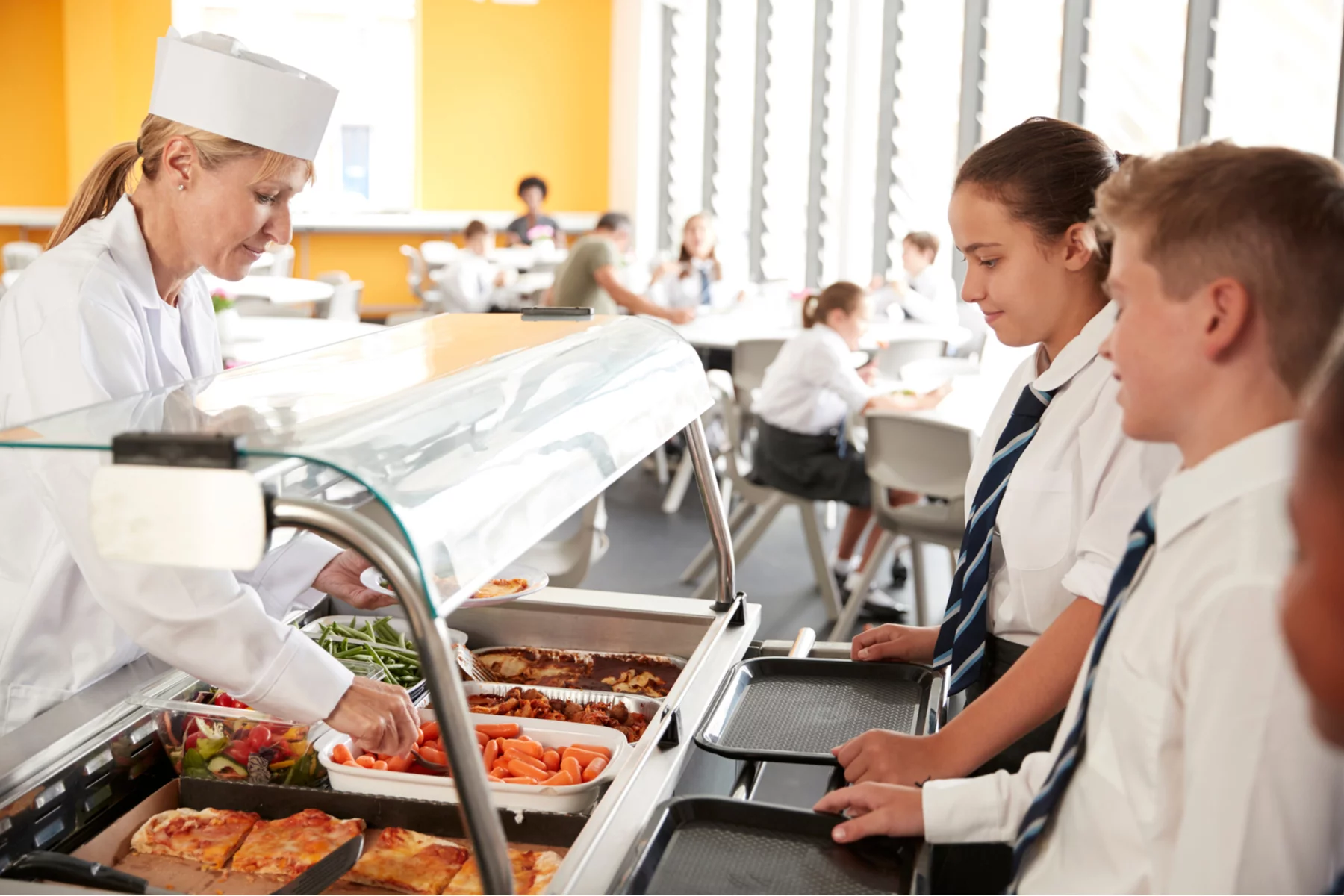
Children can take packed lunches to school or buy food from the canteen, tuck shops, and vending machines. Eligible students may also apply for free meals.
Secondary school education in Northern Ireland
Compulsory secondary education covers five years (11 – 16) and is divided into two stages. Key Stage 3 (KS3) covers Years 8, 9, and 10 while Years 11 and 12 are Key Stage 4 (KS4). During these stages, students deepen and solidify their primary school knowledge and skills. They also broaden their scope of learning by including modern languages, sciences, technology, arts, environment, and society. Religious and physical education and life and work skills are also important.
Students in Northern Ireland sit the GCSE exam at the end of Year 12, and the AS-Level at the end of Year 13. In Year 14, they graduate secondary school with an A-Level qualification. These qualifications are similar to England and Wales except for one key difference. Students have a choice of grading systems; A* to G or 9 to 1.
Out of the 193 state secondary schools, 66 are grammar schools. Grammar schools select their students based on ability. Prospective students must complete entrance exams, known as the Eleven Plus (11-plus).
Support for children with special educational needs (SEN)
Northern Ireland takes an inclusive approach to education. In other words, most learners with special educational needs (SEN) attend mainstream state schools. Only a small number of students – often with high complex needs – are enrolled in special schools.
The Special Educational Needs Advice Centre (SENAC) is the first place parents can seek support and advice for their child with SEN. This organization works with parents, schools, and education bodies to ensure that children receive the right support and resources according to their learning needs.
Private education in the UK
Rather confusingly for many expats, private schools in the UK are often referred to as public schools, despite being in receipt of no state money. Across the UK, there are more than 2,500 independent or private schools (including international and boarding). They teach around 615,000 students each year. These numbers include primary and secondary education as private schools often enroll children from 4 to 18.
Private primary schools in the UK
Independent primary schools are also called preparatory schools. These can be single-sex or co-ed. Unquestionably, private schools are expensive. Even so, they offer a wider range of facilities and activities, smaller class sizes, and an excellent quality of education. That said, costs depend on the child’s age and whether they are day or boarding students. On average, these fees can range from £21,000–45,000.
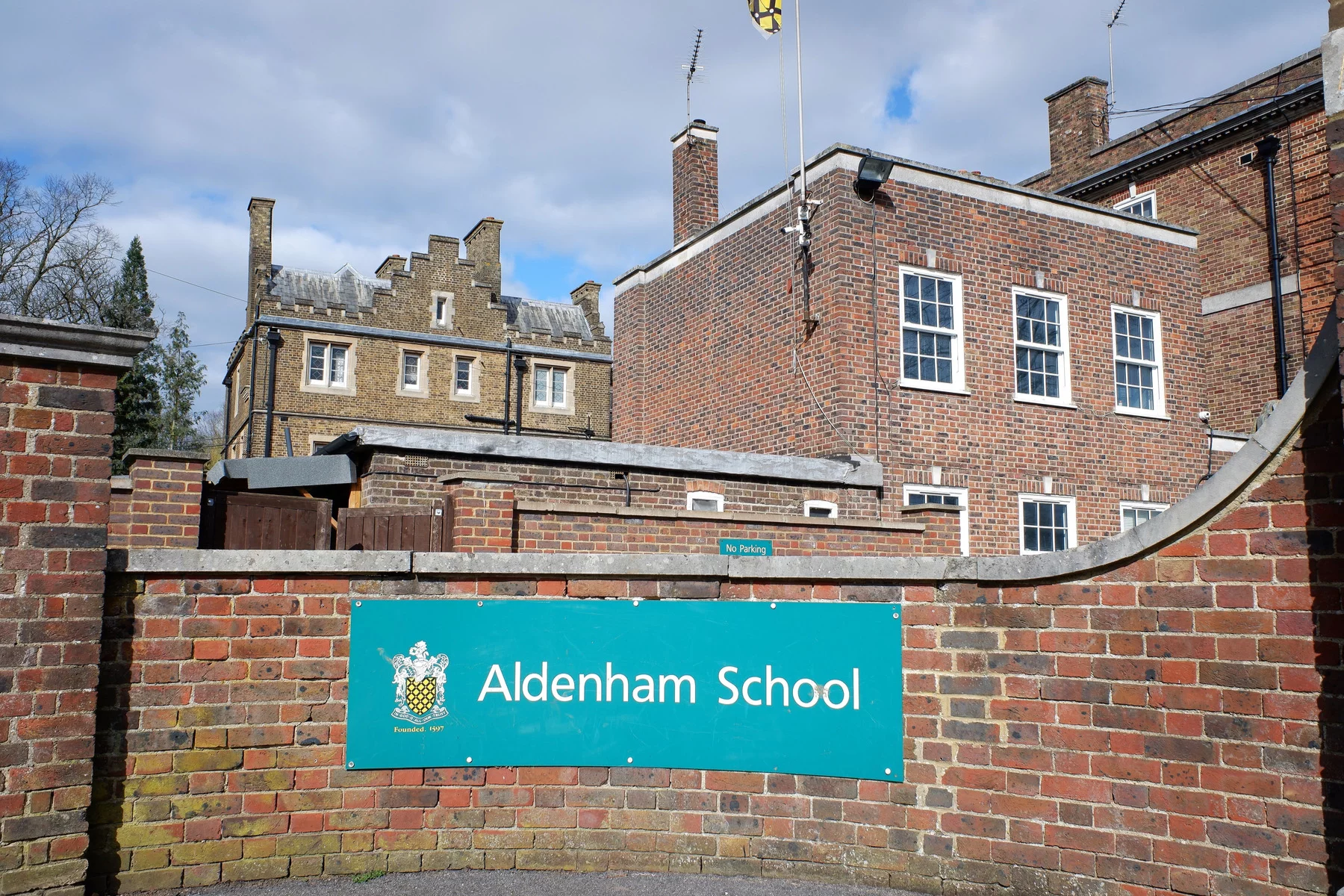
Conveniently, you can search for schools with the Independent Schools Council’s (ISC) interactive map. Alternatively, you can also use the Best Schools’ search tool or confine your search to Wales, Scotland, and Northern Ireland.
Independent schools enjoy more freedom to plan their calendar, design their curriculum, and shape their teaching approach,
Montessori schools in the UK
Most Montessori schools only cover pre-primary and primary age. Their teaching approach follows the educational theories of Maria Montessori, often coined as “follow the child.”
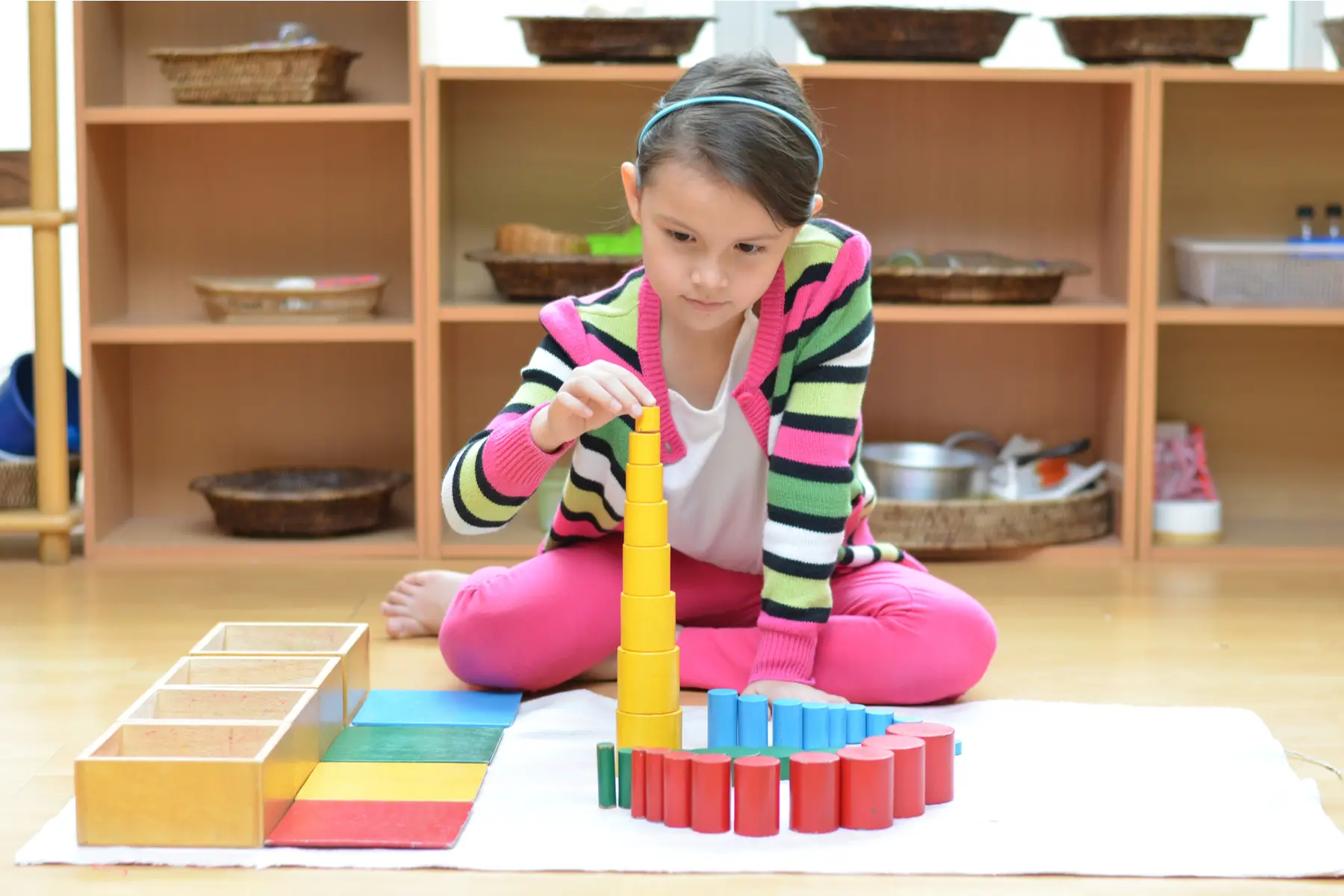
In other words, the school is a child-centered learning environment with open-ended teaching materials. Consequently, the teacher supports the child to learn at their own developmental pace. You can find a Montessori school in the UK with this search tool.
Steiner Waldorf schools in the UK
Conversely, Steiner Waldorf schools follow the educational philosophy of Rudolf Steiner. It encourages learning through play and meeting the child at their natural developmental level. It also combines artistic and physical activity with academic learning.
An example of a Steiner Waldorf school is the Edinburgh Steiner School in Scotland, covering primary and secondary education. You can find more schools in the UK with this interactive map.
Private secondary schools in the UK
At many independent schools, especially international ones, students can write the International General Certificate of Secondary Education (IGCSE) or Advanced Placement (AP). For example, students can study the AP program at the Pearson Online Academy. Alternatively, if a school offers it, they can graduate with the coveted International Baccalaureate (IB). As of 2022, students can obtain the IB at 92 schools across the UK, such as the ACS International Schools and St Leonards in Scotland. No schools in Northern Ireland offer any of the IB programs.
International schools in the UK
International schools in the UK are diverse and offer British and country-specific curriculums. For example, there are Japanese, German, French, Spanish, and American international schools in London. Fees range from £9,500 to £26,000 per year. One international school, St.Leonards, even has boarding options from Year 6. Boarding fees can range from £24,000 to £38,000 depending on the child’s age and how many nights they stay on campus.
In our directory, you’ll find a list of excellent international schools in the UK. Alternatively, the International School Search is another handy tool to find schools.
The International Baccalaureate (IB) in the UK
In 2021, 5,400 schools offered 7,500 IB programs across 159 countries, including the 120 international schools in the UK. Unfortunately, no schools in Northern Ireland seem to teach any IB programs. Most importantly, the International Baccalaureate (IB) is globally recognized and grant students entry to esteemed universities.
Graduating in the UK
In England, Wales, and Northern Ireland, students complete their compulsory education by attaining a General Certificate of Secondary Education (GCSE). The equivalent in Scotland is the National 5 exam.
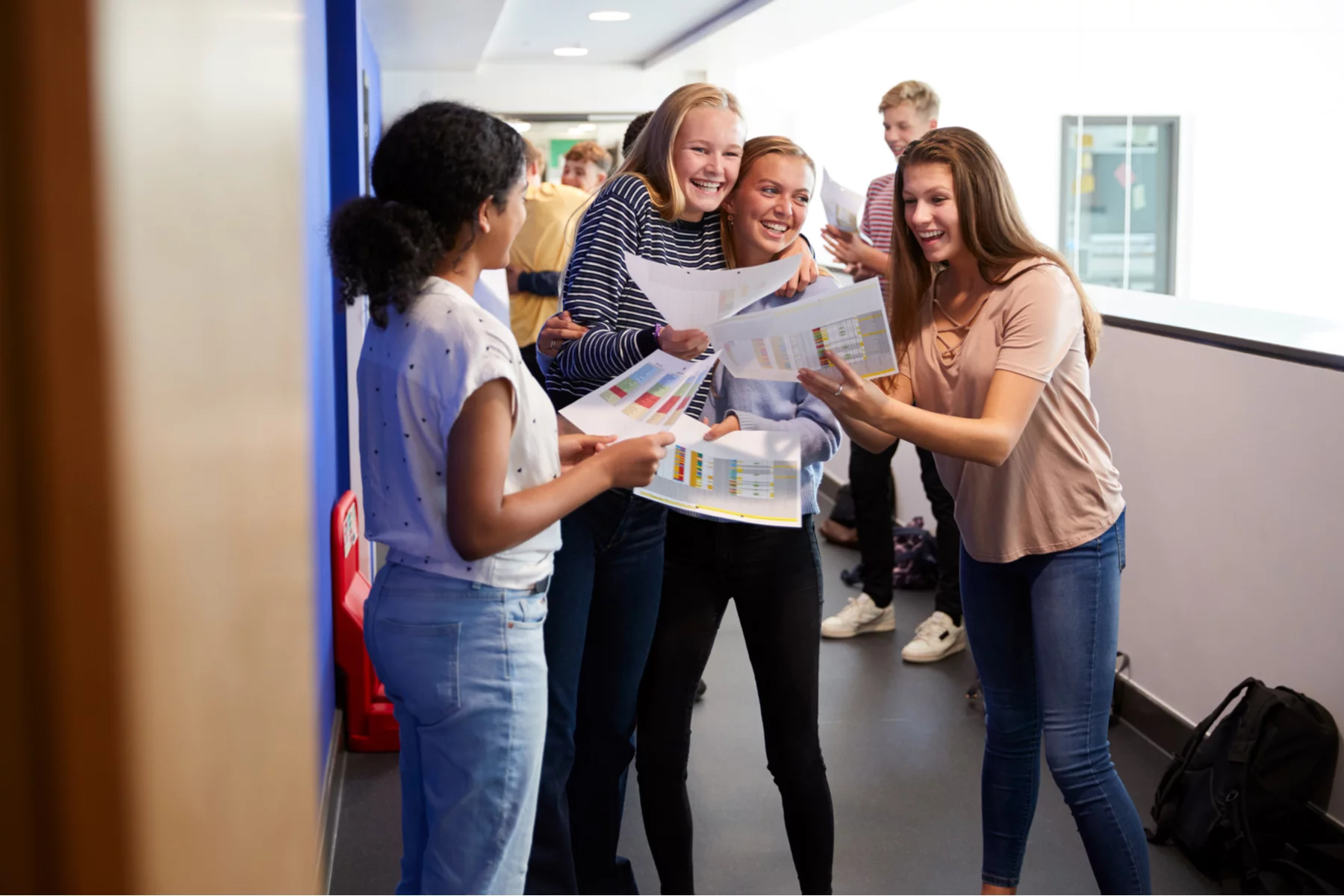
If students choose to continue their secondary education for two more years, they graduate with an A-Level. This qualification only applies to England, Wales, and Northern Ireland. Conversely, in Scotland, students graduate with the Scottish Baccalaureate if they pass the Advanced Highers exam in S6. However, it is possible to apply for Scottish universities without their Advanced Highers if their Highers grades were good enough. In other words, they could leave secondary school in S5, instead of S6.
Once graduated, students can apply for higher education, internships, or start working.
Financial aid and scholarships in the UK education system
State-funded education is free. Even so, there are always extra costs involved. Fortunately, across the UK, students can get financial aid and scholarships. For instance, charities, like Buttle UK and the Royal National Children’s Springboard Foundation, offer full bursaries for boarding schools.
In England, there is the 16 to 19 Bursary Fund. While in Scotland, Wales, and Northern Ireland, students can apply for Education Maintenance Allowance (EMA).
Uniforms and transport
Parents can request financial support to cover uniform costs, PE kits, and transport to school. Each region has its own scheme:
- England – uniform and transport
- Wales – School Essentials Grant
- Scotland – uniform and transport
- Northern Ireland – uniform and transport
Most independent, international, or boarding schools offer eligible students financial aid or scholarships. It is advisable to directly enquire at the school.
Educational support for expat students in the UK
According to the National Statistics report (2020), around 19.3% of students in state schools speak English as an additional language (EAL). In other words, English is not their first language, which may hinder their studies. Therefore, most state schools offer international students EAL support. However, the level of assistance varies depending on resources because the government does not explicitly subsidize EAL support. Still, the Ethnic Minority Achievement Grant (EMAG) has been funding EAL support in schools.
In contrast, Scottish schools offer English for Speakers of Other Languages (ESOL) support. It is a good idea to contact the school to establish how they will integrate your international child.
Changing schools in the UK
Students can transfer schools during the year. First, contact your local council to find out which schools have places and how to apply. Next, submit an in-year application. Once placed, your child would start at the beginning of the following term. This process only applies to England, Wales, and Scotland.
Alternatively, in Northern Ireland, you must complete an AP1 transfer form and submit it directly to the new school. Usually, the school responds within ten days.
Chances for parental involvement in schooling in the UK
The Social Mobility Commission (2017) showed a link between parental involvement in schooling and improved educational outcomes.
As a result, Parentkind and the National Governance Association (NGA) collaborate to strengthen parental involvement in the UK education system. The NGA is an organization for governors and trustees of state schools in England. Parentkind is a national charity representing parental views in education. It also supports Parent-Teacher Associations (PTAs).
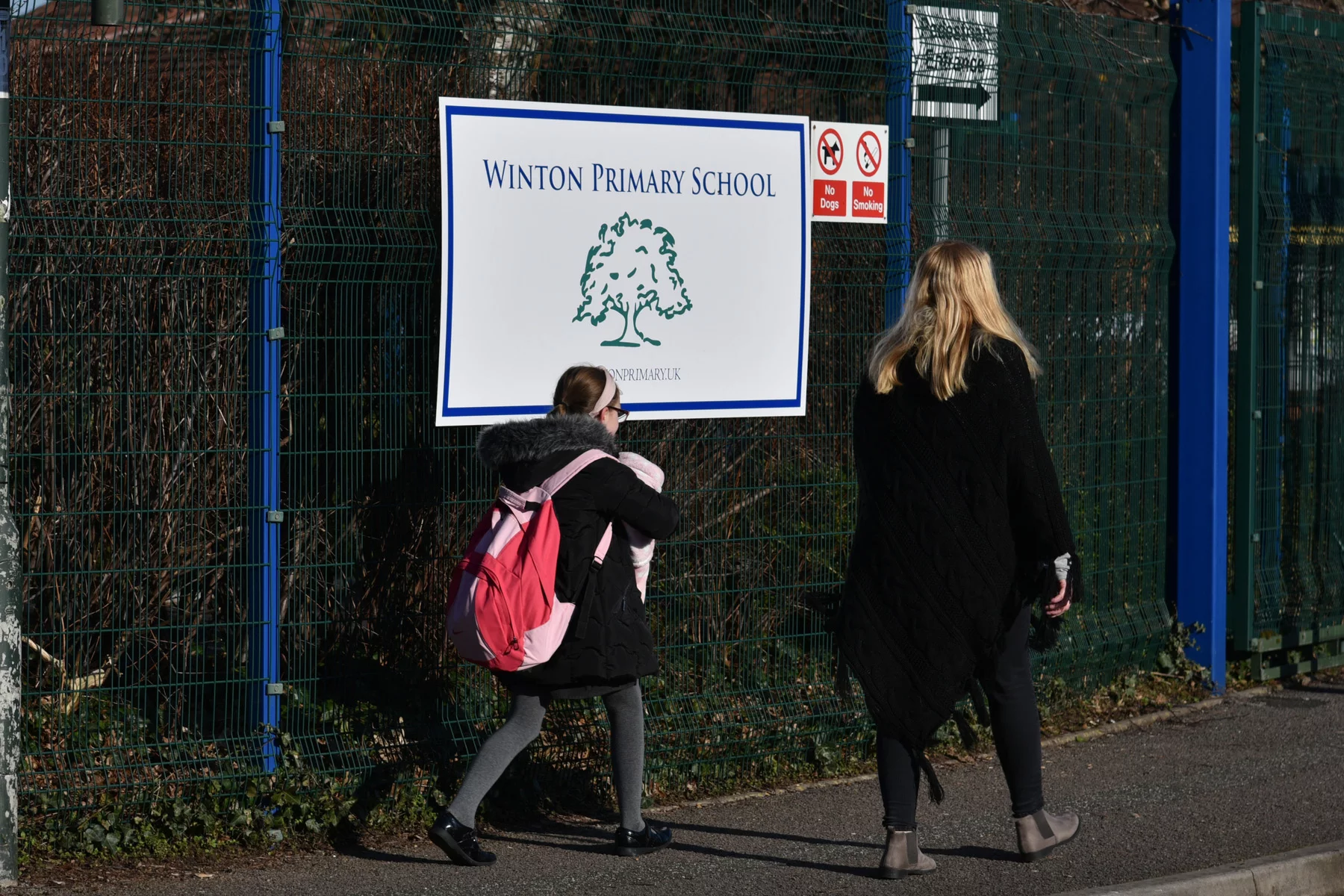
Most schools have governing boards. By law, they must consult parents on specific issues like admissions criteria and behavior policies. Besides, parents can serve as representatives (parent governors or trustees) on these boards. In Scotland, parent councils have replaced school boards in many state schools.
Practical tips
It is a good idea to check with your child’s school how they involve and engage parents. They may use methods, such as:
- An online parent resource center or contact function on their website
- School events where parents can help
- Regular blogs, newsletters, and updates from the governing board
- Parent forums, councils, or focus groups
- Parent evenings
- Social media and communication apps like Parent Ping or Parent Hub
Parent and other useful organizations
- Parentkind – parent asscociation in England and Wales
- Parentkind-NI – parent assocociation in Northern Ireland
- Connect – parent association in Scotland
- Governors for schools – England and Wales
- Learning with Parents – a parental engagement policy group
- Big Change – transforming education systems
Homeschooling in the UK
In contrast to many European counties, homeschooling is included in the UK education system. It is also called home education or elective home education (EHE). In fact, all four education departments offer support and resources to ensure high-quality tuition for home-educated children.

Parents can homeschool their children full-time or part-time. Accordingly, a child does not need to follow the national curriculum. Still, the local council will regularly review their progress. If it is found lacking, they may serve parents with a school attendance order. As such, the child has to attend their local school.
Regional organizations and support
- England and Wales – local councils
- Scotland – Home Education Scotland
- Northern Ireland – Education Authority (EA)
Useful resources
- Department of Education (DfE) – oversees child services and education in England
- Department for Education and Skills (DfES) – official government website for the education system in Wales
- Education Scotland – executive agency of the Education Department in Scotland
- Department of Education-NI (DE) – government website for education in Northern Ireland
- mygov.scot – government portal for the education system in Scotland
- Parentzone Scotland – useful information on Scottish schools for parents
- Parent Club – offers up-to-date guidance from the Scottish Government on your child’s health and education
- Education Wales – information about the new curriculum
- Ofsted – the Office for Standards in Education, Children’s Services and Skills; reports of the quality of education in school in England
- Independent Schools Council (ISC) – find private schools in the UK
- Scottish Council of Independent Schools (SCIS) – find a private school in Scotland
